Ludwig van Beethoven
Piano Sonata (“Moonlight”) in C sharp minor, Op.27, no.2 (Sonata quasi una Fantasia)
The year 1801 marked not only the dawn of a new century, but also a significant new approach on Beethoven’s part to matters of form and structure in the piano sonata. The bold use of unusual and exotic keys, quasi-programmatic elements, irregular forms and unorthodox ordering of movements all contributed to heralding a new note in Beethoven’s sonatas. The composer called each of his two sonatas Op. 27 quasi una fantasia. In these works, the improvisatory impulse, free flights of fancy and avoidance of conventional forms are carried further than ever before. In Eric Blom’s words, these sonatas “show the composer emancipating himself from the classical sonata pattern and doing it as drastically as possible by substituting pieces in a freely chosen form for the traditional first movement that was always the most important part of a sonata, though not invariably in what we now call sonata form.”
While the first of the two Op. 27 sonatas may be one of Beethoven’s least-known, its sister, the Moonlight, is surely the best-known. The subtitle, as many people are aware, was not given by Beethoven. It came from the German critic and poet Ludwig Rellstab (l799-l860), who once commented that the first movement made him think of “a vision of a boat on Lake Lucerne by moonlight.” In point of fact, the composer never saw the Lake of Lucerne, and in any case, the mood ascribed to the sonata fits only the first movement. Furthermore, Beethoven never even heard of the appellation “Moonlight” Sonata, as it was not affixed until five years after his death. The work was very popular in Beethoven’s lifetime, though the composer himself did not have a particularly high regard for it, and was annoyed that the public afforded it greater status than many of his other works.
The musical and structural (as opposed to the romantic and fictitious) elements of the sonata are considerable. The Moonlight is written in a rarely-used key, especially for the periodC-sharp minor. Mozart did not write a single work in this key, and Haydn did so only once. Also, most unusually, all three movements are based in the tonality of C-sharp: minor for the outer movements, major for the central one, at least to the ear. (The Allegretto is technically in D-flat major, the enharmonic equivalent of C-sharp major, and easier to read than C-sharp major; the latter would require seven sharps in its key signature!) Like the two previous sonatas, this one is an experiment in form, with Beethoven attempting to build a successful structure with the main weight at the end, not the beginning, of the sonata.
The opening movement in each of the two previous sonatas had been in slow or moderate tempo, while the finale was not only fast but also the most substantial movement. In the Moonlight, this approach is carried to extremes. In addition, each movement inhabits a single emotional world without contrasts: the unbroken placidity of the first movement gives way to the blithe, innocent charm of the second, which in turn is succeeded by the tempestuous upheavals of the third.
Maurice Ravel: Gaspard de la nuit
Gaspard de la nuit ranks as one of the most highly original, imaginative, evocative and technically difficult works in the entire piano repertory. Its composer made no bones about this surreal, hallucinatory music, describing it as “three romantic poems of transcendental virtuosity” in which he deliberately set out to surpass even Balakirev’s notorious Islamey in terms of sheer technical difficulty. The great French pianist Alfred Cortot called the composition “one of the most astonishing examples of instrumental ingenuity ever contrived.” Pianist Charles Rosen has called the second of the three pieces (“Le Gibet”) “an assault on the nerves of the listener, a creation of tension through insistence, like the Chinese water torture,” and the composer Henri Gil-Marchex once enumerated 27 different kinds of touch in this one piece alone. Clearly, Gaspard is something special indeed!
Ravel’s inspiration to write Gaspard de la nuit derived from vivid and macabre poems by the French Romantic poet Aloysius Bertrand (1807-1841), to whose work Ravel was introduced by the pianist Ricardo Viñes, a fellow pupil at the Paris Conservatoire. In 1908 Ravel set three poems from Bertrand’s eponymous collection, written in 1830. Viñes gave the first performance on January 9, 1909. Each piece is dedicated to a different musician, respectively Harold Bauer, Jean Marnold and Rudolph Ganz.
ONDINE: Ondine is a beautiful, mischievous water sprite who tries to attract mortal men to her magical kingdom through seductive singing. Ravel portrays her in the rare key of C-sharp major (seven sharps!) with glistening, delicate, “water-music” as befits Bertrand’s description of “Ondine who skims over the drops of water that resonate on the diamond-shaped segments of your window illuminated by the dismal rays of the moon.”
LE GIBET: A sinister atmosphere of desolation and ghostly terror pervades “Le Gibet.” The dynamic markings never rise above mezzo-piano. In some of the eeriest sounds in all music, Ravel portrays a corpse hanging from a gibbet, swaying in the wind against a sky reddened by the setting sun. The implacable tolling of a distant bell, represented throughout by the piano’s persistent B-flat octaves, is set against a richly varied harmonic landscape. So pervasive is this tolling B-flat that “Le Gibet” has been called “a fantasia on one note.”
SCARBO: This piece, no less eerie than “Le Gibet,” portrays the unpredictable, lightning-like appearances and disappearances of the malicious dwarf Scarbo, who changes his shape, size and colour at will. The scintillating, hallucinatory effects require such technical dexterity as to have earned Gaspard an almost mythic status among pianists.
Sergei Prokofiev: Visions fugitives, Op. 22
Like many of the great composers, Sergei Prokofiev showed his talent early. He was composing before he was six, he had produced an opera by twelve, and for his application to the St. Petersburg Conservatory, at thirteen, he submitted four operas, two sonatas, a symphony and several piano works. During his teens he studied with such luminaries as Glière, Rimsky-Korsakov, Liadov and Tcherepnin.
As a pianist he was no less sensational. He appeared as soloist in his own First Piano Concerto when he was 21 (July 25, 1912, in Moscow) and less than two years later played the same work, in place of the traditional classical concerto, for his final examination at the St. Petersburg Conservatory before a panel of twenty judges, each of whom had the published score in his hands. Prokofiev considered it his first “more-or-less mature composition,” and it became his first published work. For the piano alone he left a canon of nine completed sonatas and innumerable smaller pieces, including many written as a boy.
The Visions fugitives date from the years 1915-1917. These twenty miniatures (average length about a minute) take their cue from Beethoven’s Bagatelles and Chopin’s Preludes, their title and inspiration from these lines by the Russian Symbolist poet Konstantin Balmont: “In every fugitive vision I see worlds, / Full of the changing play of rainbow hues.” While overall the expressive range is oriented more toward the restrained end of the emotional spectrum, they nevertheless serve as a workshop for a great variety of colourful, experimental epigrams. Prokofiev’s biographer Israel Nestyev describes them as “something like entries in a diary” and as “experiments from a laboratory, a storehouse of materials to be used in the future large works of a composer always eager to increase the scope of his art.” Moods range from the lyrical to the whimsical, from the spirited to the serene, from the sedate to the seductive.
Sergey Rakhmaninov: Piano Sonata no. 2 in B flat minor, Op. 26
Rakhmaninov wrote only two piano sonatas, the First in 1907, the Second in 1913. He heavily revised the original version of the Second in 1931, considerably shortening it and lightening the textures in numerous passages. In 1940, with the composer’s permission, Vladimir Horowitz made his own variant, combining elements of both versions, and continued to make additional revisions over the years. Pianists today often feel free to create their own synthesis of Rakhmaninov’s and Horowitz’s versions.
Although not especially long in minutes, this sonata is big in scope and impact, embracing an enormous emotional range, and approaching symphonic proportions in its textures and polyphonic complexities. The sound of heavy, pounding bells, which fascinated the composer all his life, and which found their way into so many of his scores, are evoked frequently over the course of the sonata.
The three movements are not defined as such in the score, and are played without pause, underscoring their close interrelationship. Thematic ideas are shared among the three movements, particularly motifs deriving from the drooping four-note figure first heard in the sonata’s opening gesture under a rapidly pulsating B-flat minor chord. The first movement conforms to a traditional sonata-allegro structure, whose second subject (D-flat major) is announced during the first moment of relief from the furious onslaught of dense textures, rhythmic complexities and dramatic flourishes. Nevertheless, upon close investigation, this “new” theme reveals itself as a transformation of the first.
The second movement serves as an oasis of quiet meditation separating the traumas of the first movement from the virtuoso pyrotechnics of the third. Both main themes from the first movement make return appearances.
The third movement is launched with a precipitous plunge, fortissimo, spanning four and a half octaves. The first subject is less a theme than a seismic upheaval. Rakhmaninov saves his “big tune” for later, one that might well have found its way into a concerto instead, characteristically decked out with richly layered accompaniment. The sonata ends with a grand salute to B-flat major.
Programme notes by Robert Markow, 2012.



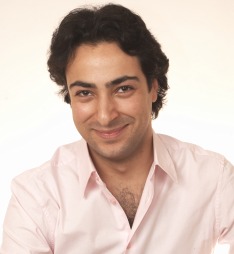 Thank you for taking time out of your busy schedule. Where are you today?
Thank you for taking time out of your busy schedule. Where are you today?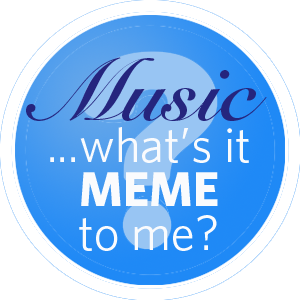
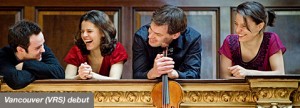

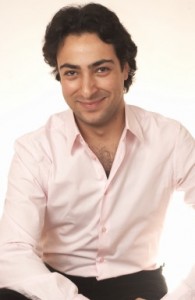
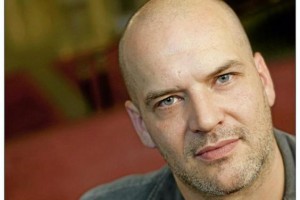 Thank you for taking time out of your busy schedule. How did the New Year start for you?
Thank you for taking time out of your busy schedule. How did the New Year start for you? Looking for a way to experience heart-stopping classical music recitals without breaking the bank? RU35, or Recitals Under 35, is the Vancouver Recital Society’s new program for discerning young Vancouverites between the ages of 18 and 35. RU35 tickets for all recitals are only $18, a savings of up to 75%.
Looking for a way to experience heart-stopping classical music recitals without breaking the bank? RU35, or Recitals Under 35, is the Vancouver Recital Society’s new program for discerning young Vancouverites between the ages of 18 and 35. RU35 tickets for all recitals are only $18, a savings of up to 75%.